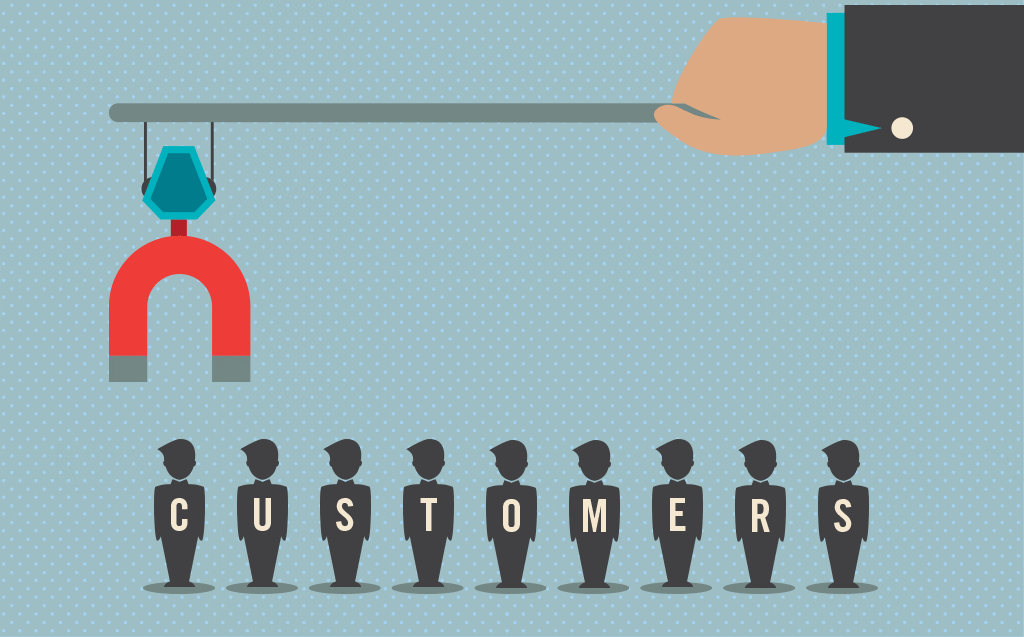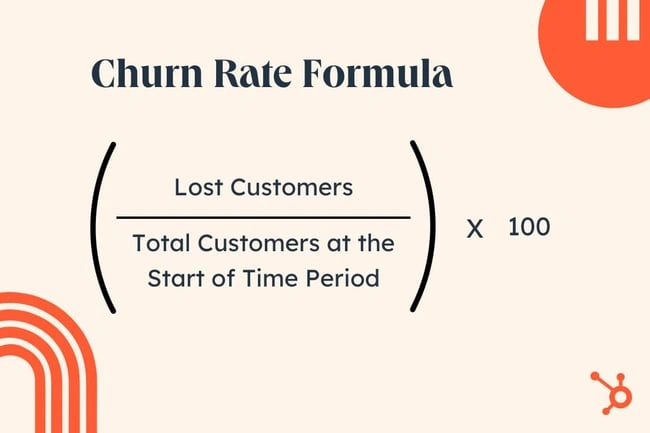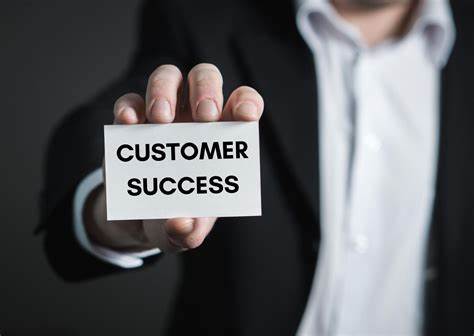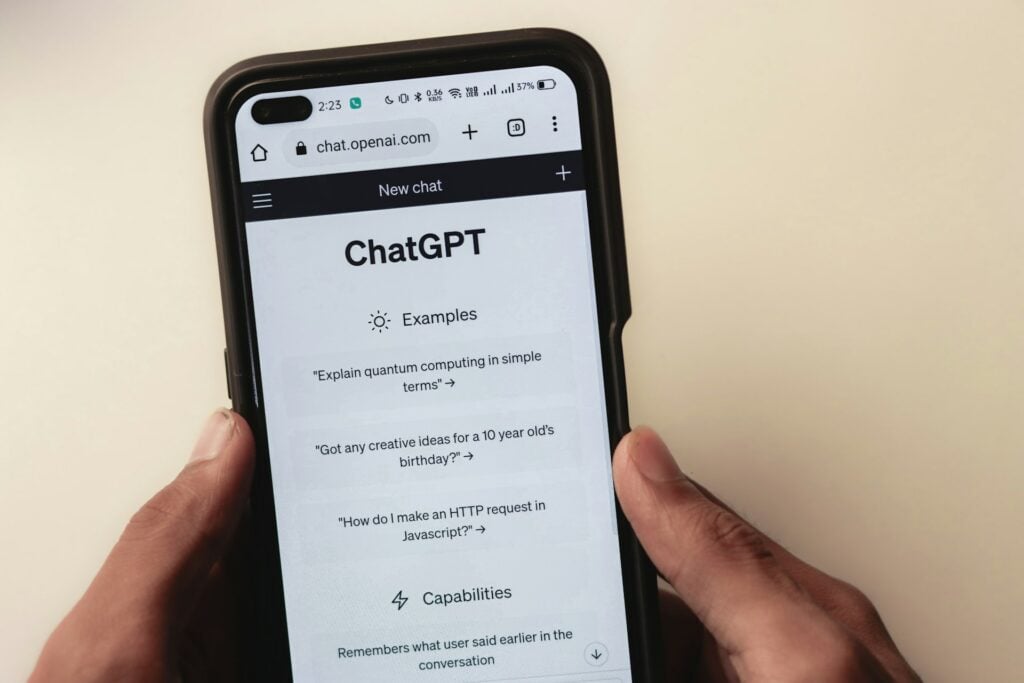Defining customer success is a crucial step for your business. This is why I believe a customer success guide can be quite handy to have. What action can you take to make your customers more successful, both in everyday life, and with your product or service? Once you’ve got your idea of customer success in the bag, you just have to implement it.
Customer success is something that’s not prioritized as much as it should be. What’s the point in piling capital into recruiting more clients if you’re not going to make the same effort to retain them? The logic is simple: happy clients will come back! Not only that, but happy clients will tell their friends and family about your business too. Treat the customer right and they will market your business for you.
The average annual churn rate for SaaS companies was 5.2% as of January 2024. Losing 5% of your clients every month adds up over time and it’s your job to keep that number as low as possible. Defining customer success for your specific business is the key.
But what actually is customer success?

What is Customer Success?
Customer success is the root cause of a great customer experience. It’s built on repetition. By continually ensuring the customer is the priority during any and all interactions with your business, you are taking a giant step towards retaining them.
When done right, customer success improves customer happiness and loyalty, reduces churn, and turbocharges your revenue. What’s not to like about that?
“With the shift to the SaaS model, the connection between your customers' success and your success is much more direct and felt more quickly. Smart companies have realized that customer loyalty is the most powerful sales and marketing tool that they have."
Bill Price, Founder of Drive Solutions Tweet
Customer success strategies are crucial for new employees to learn during training and onboarding. If you plan to build lasting relations with your customers, having a clear goal in place will provide the best possible foundations for customer success in SaaS.
What’s the Difference Between Customer Success and Customer Support?
Customer support is a critical part of customer success, though it shouldn’t be thought of as the same thing. Although completely necessary, customer support can be categorized as a reactive measure rather than a proactive one. It’s focused mostly on solving immediate issues.
Customer success, on the other hand, takes a proactive, strategic approach to ensure long-term customer satisfaction. Customer success is truly helping your customers achieve their desired outcomes. You’re planning their entire journey, not just helping when they encounter hurdles.
Why is Customer Success Important?
Keeping your current customers happy is a sure-fire way to success. Attracting new customers is great, too, but the former has to be the priority. Businesses have a 60% to 70% chance of selling to an existing customer. For a new prospect, that figure is just 5-20%. If you’re prioritizing a strong recruitment drive over customer success, then the math ain’t mathin’.
And that’s what it comes down to: if the customer is successful, the business is successful. When your customer loves the service, has no problems, and is recommending you to all their friends, you know you’ve done your job well. Successful customers market your product for you.
All in all, customer success is crucial for many reasons. Most notably:
- Customer retention. By ensuring a customer reaches their desired outcomes, you increase satisfaction and loyalty.
- Revenue growth. As mentioned earlier, happy customers aren’t only more likely to renew but also to expand their use and potentially upgrade.
- Brand advocacy. Successful customers are more likely to recommend your business or leave positive testimonials.
- Reduced churn. By being proactive with your customer success, you can identify and address issues before they transition into churn.
- Customer insights. Customer success teams are in direct contact with customers on an ongoing basis, providing valuable insights into customer needs, pain points, and preferences.
- Competitive advantage. Great customer success stands out. It’s a competitive world, but outstanding customer success is a key differentiator that both attracts and retains customers.
- Long-term growth. Prioritizing customer success fosters long-term relationships with customers and sets a sturdy foundation for sustainable business growth.
Defining Customer Success: The 6 Key Components
1. Customer Success Planning
If you don’t have your customers’ aims in mind then how can you possibly make them happy? Use the data you’ve gathered on your customers to strategically plan their life cycle. Customer demographics vary from business to business, but you need to know the ins and outs of the people using your product. You need to see things from their perspective, know what makes them happy, and then give it to them.
Each customer success plan revolves around targets and key performance indicators (KPIs) that are set right from the beginning. Use the specific knowledge of your customers to define customer success in your niche. There is no ‘one shoe fits all’, but the method of planning and preparing is a transferrable one.
2. Smooth Onboarding
You’ll want to make the transition from prospect to user as seamless as possible. Attracting new customers is a whole different ball game and we won’t be going into it here, but the second you have people willing to pay, they become your customers. This is when customer success starts to take shape.
“A poor onboarding experience is hard to come back from and is the fastest way to lose a customer. It’s critical to actively think about the entire customer journey, Define it. Map it. Document it."
Paul Philip, Founder and CEO of Amity Tweet
Customer success teams should be installed to monitor the customer journey and make sure everything is running smoothly. We’ll cover those teams a little later. In the meantime, keep in mind that these newer customers are unlikely to be familiar with your software. They may require a little helping hand during their onboarding phase.
If the onboarding process is bumpy, it’s going to cause stress and raise red flags. If it feels intuitive and takes a matter of moments, your customers are going to fall in love.
3. Customer Success Playbooks
Bill Belichick, widely regarded as one of the best NFL head coaches of all time, holds the record for the most Super Bowl Wins ever. You can bet your bottom dollar he had one hell of a playbook. Every coach needs a playbook and a business is no different.
By defining customer success clearly, your customer success team can create a playbook catered to your customers that works wonders for your business. Detail the best scripts, benchmarks, and methods for taking your customer success to the next level.
These materials should be data-backed so you know you’re getting the most out of them. For example, the perfect customer service script will combine what works from all your previous customer service calls. You can rewatch them, analyze customer satisfaction, and figure out the best changes to make to improve it next time. And that’s the other thing: customer success playbooks are always improving as data evolves. Anticipate it.
4. Regular Business Reviews
To ensure you’re on course to hit your targets, customer success teams will always have to be on their game. It’s important for you to regularly and consistently evaluate the customer success team’s plans, targets, and achievements.
To do this, you should also be checking in with customers to ensure they are happy with the service you’re providing. If not, find out why and fix it. This is the art of customer success: proactivity. Discuss matters like customer pain points, preferences, and go over any obstacles that stand in the customer’s way.
A great way to regularly review your business is to conduct regular QBRs (Quarterly Business Reviews). Below is a QBR template that you can use to kick-start things. It provides you with a structure so that you can swiftly move into the review process.

5. Self-Service Support
In an ideal world, you’d be there every time your customer needed you. However, we both know that’s next to impossible.
That’s why it’s a good idea to automate your support.
Self-Service support tools have evolved a lot over the last decade. According to Harvard Business Review, 81% of customers now attempt to take care of matters themselves in a bid to cut time spent waiting for a live representative.
Large corporations and businesses are now providing users with self service tools too. And this isn’t just your average FAQ page. Types of self-service support are as follows:
- Chatbots: These are virtual helpers that rifle through databases to provide automatic answers for customer service. Some are certainly more sophisticated than others, but with the astronomical rise of GPT technology, implementing this is a no-brainer.
- Knowledge Bases: Knowledge bases are full of reports, articles, and information packs to guide your customers through their problems. They’re an efficient way to teach customers about the product or service you’re offering. Think of it like a mini Wiki for your business.
- Online Discussion Platforms: Customers can interact with one another to solve queries. This can also build a sense of community.
- How-to Video Guides: These are step-by-step video recordings of how to solve problems and access the various features of the product or service you’re offering. These are easy to follow and greatly influence the user experience.
“The best customer service is if the customer doesn't need to call you, does not need to talk to you. It just works."
Jeff Bezos, founder of Amazon Tweet
6. Feedback Loops
If your business does not collect regular feedback then you might as well forget about improving anything. It’s the key to unlocking what’s missing, and that can take your business to the next level.
Closing the feedback loop is so important to keeping your customers satisfied. When you act on feedback, you enhance customer satisfaction. The customer feels heard and they’re far more likely to use your software again if they believe you are listening to their wants and needs.
There are plenty of softwares out there that can help you with this, too. First and foremost, you should establish a method of regularly collecting customer feedback. Whether this is through surveys, customer support calls, reviews, user interviews, or all of the above, you need the customer’s opinion if you want to make solid decisions moving forward.
Once you have the customer feedback, simply analyze it and set things in motion to improve your product and close the feedback loops.
Metrics your Customer Success Team Can Track
There are several important metrics to consider when defining customer success for your business. Some are a lot easier to process than others, but without them, your business would not have any kind of scale of success. As Einstein once said, “Not everything that can be counted counts, and not everything that counts can be counted.”
Here are some of the specific metrics you can use to track customer success:
Customer Retention Rate (CRR)
The customer retention rate details how many of your customers have been retained over a period of time. Generally speaking, this is measured on a yearly basis. The higher the percentage, the better. A lower percentage could show that there are issues or problems with your customer service or the product itself.

Net Promoter Score (NPS)
The Net Promoter Score (NPS) measures a customer’s general satisfaction and their loyalty to the company. NPS is a survey-based metric and the statistic is created from how likely your customer is to recommend your product or your services.
While it’s a more generic metric, it can be a valuable KPI. It doesn’t reveal specific likes or dislikes of your customers, but it can help reduce churn if you act upon the data it provides.
Customer Satisfaction Score (CSAT)
A CSAT is used to judge how happy your customers are with the service they are receiving. It’s a simple and intuitive rating system that can be given to customers at opportune moments. While it varies per industry, a good CSAT score is somewhere between 75-85%.
The ideal time to send a customer satisfaction survey is immediately after a meaningful moment in the customer lifecycle. For example, you could provide one after the onboarding experience to get feedback tailored to that specific part of the customer journey. Similarly, you can give surveys after a customer service call or several months before their subscription renews so you have time to counter negative feedback.
Monthly Recurring Revenue (MRR)
A very common but important SaaS metric used to calculate a business’s revenue per month is MRR. MRR provides a reliable forecast of financial incomings and helps your company measure momentum and growth within the business. To calculate MRR, simply take your average revenue per user per month and multiply it by the total number of active users each month. Or you can automatically generate reports on MRR and other important metrics, as well manage customer invoicing processes, by implementing reliable subscription billing software.
Typically, you’ll use MRR to learn from the past and prepare for the future. If you keep a spreadsheet of your MRRs then it enables you to forecast future revenue. You can also go deeper, focusing on different types of MRR:
- New MRR: Revenue from newly acquired customers.
- Expansion MRR: Revenue from existing customers who upgraded their subscription.
- Churned MRR: Revenue lost from customers who downgraded or canceled their subscriptions.
When used correctly, this enables teams to decide where to focus their energies in the short term. Lead generation or customer retention? Your MRR will show you the way.
Customer Attrition Rate
This metric measures the percentage of your customers that no longer use your services or product. Boo! Anything from the loss of recurring customers, the closing of accounts, and any canceled subscriptions can factor into the customer attrition rate. It’s a must-track metric when it comes to measuring and defining customer success strategies. The higher your CAR, the more customers you are losing out on.
If you’ve discovered that your CAR is higher than you want it to be, you have a few options to reduce it.
- Firstly, you want to find out why your customers are leaving. You can find out by emailing them directly or offering them a survey. It’s often down to one of four things:
- Pricing
- Poor customer service
- Bad user experience
- You attracted the wrong customer
- Be proactive with at-risk customers. Now you have the tools to discover what a soon-to-be churned customer looks like, you can identify them in advance and work towards resolving common problems.
- Upgrade your customer service. This is an area that really helps one business stand head and shoulders above its competitors. In research conducted by Salesforce, 88% of customers stated that good customer service was more likely to make them purchase again.

Source: Hubspot
What is Customer Success Management?
Customer success management (CSM) is the process of proactively managing the relationship between a company and its customers. This relationship is built brick by brick to ensure the customers derive maximum value from the product or service they’ve purchased.
A well-oiled machine will understand customer needs through regular communication, implement a seamless onboarding experience, and then continually engage customers and add layers to the relationship. CSM will monitor the metrics outlined above and keep an eye on indicators that assess the health and success of the customer.
When challenges or issues arise, it’s down to the customer success management team to proactively address them. They also identify opportunities for upselling or cross-selling by recommending solutions to the customers’ ever-changing needs and objectives.
Finally, customer success management teams serve as advocates to make the customers’ voice heard within the company. They play a crucial role in capturing customer feedback and using it to inform product development or marketing strategies.
What is a Customer Success Manager?
Overseeing day-to-day customer relations, the customer success managers are the heart and soul of your customer success team. These managers work proactively and aim to deliver positive results and retention from clients.
What Does a Customer Success Manager Do?
A customer success manager’s duties include: onboarding, preventing churn, overseeing the success team, assessing customer needs, monitoring customer success metrics, looking for growth opportunities, and advocating for the customer within the company.
They bridge the gap between sales and customer success, too. With a high-level overview of the customer’s lifecycle, they work on building strong relationships with customers wherever they are in that cycle. This makes them experts at identifying customer goals and promoting customer loyalty. They can then feed this information to the sales team to help sales reps get an inside look to a prospect’s thought process.
Other Customer Success Team Roles
To truly ensure customer success across your entire organization, you need to fill a specific set of roles.
Chief Customer Officer (CCO)
The chief, also known as the CCO, is generally an executive role and their job is to focus on planning, executing, and improving on customers’ plans and experiences across the company.
CCOs lead the drive towards customer-centric product development and they often act as a bridge between customer success and product teams. A CCO is in charge of ensuring unity and cohesion across all teams in your business.
Vice President of Customer Success
The VP’s job is to oversee the strategy, execution, and performance of the customer success team. They are involved at the ground floor with onboarding, customer service, and even account management.
Customer Onboarding Manager
These managers create, implement, and oversee the onboarding process. A good onboarding manager will create a welcoming environment with intuitive steps for the customer to take. They ensure the customer isn’t overwhelmed with too much information too soon.
This is one of the most impactful parts of the customer journey. The onboarding process has a knock-on effect to customer retention, loyalty, churn, and overall adoption. If done right, and the onboarding process is as smooth as possible, then you can create customers for life.
Customer Success Tools
Defining customer success varies from industry to industry, but one thing remains certain: if you don’t have a coherent team using the appropriate tools, your success will always be limited.
There are must-haves in this industry. Here are some to consider.
Customer Relationship Management (CRM) Software
A CRM is indispensable if you’re looking to improve customer satisfaction. And the reason why is simple: contextual customer data empowers you to cater to their needs more efficiently.
CRMs have many benefits:
- They provide a holistic view of business operations. By letting you visualize pipelines more clearly, you can get an overview of who your target customer actually is. You can use this data to prioritize leads and swiftly identify and tackle recurring issues.
- They crystalize communication with current customers. Through CRMs, you can ensure you’re keeping your current customers happy. Reach out to them with personalized discounts, offers, or special deals. Use your CRM to continuously impress your customers. You can wish them happy birthday or give them sneak peeks into upcoming features.
- CRMs refine your internal communications. With a solid CRM in the bag, your teams can communicate with one another. CRMs enable multi-team collaboration so if your customer service team suddenly gets swamped because of a UI error, they can quickly tag the relevant developers who will be able to follow the conversation, understand the problem, and solve it.
- Get personal. Just like wishing happy birthday, you can use more personalized subject lines in your emails to capture attention. Personalizing your subject line increases the open rate by a whopping 50%!
There are tons more benefits of using a CRM for customer success, but to go over them here would be overkill. With hundreds of different platforms to choose from, we recommend you do your due dilligence. Salesforce, Hubspot, and Pipedrive are three of the biggest and best CRMs, so you can start there.
For a more specialized approach to customer success, platforms like Velaris offer advanced features that go beyond traditional CRMs. Velaris provides AI-driven tools to manage customer health, automate workflows, and gain actionable insights, making it a powerful solution for proactive customer success management.
Video Call Recorder
Recording your customer calls, user interviews, and sales calls are essential if you want to keep up with the competition. But regular video conferencing platforms like Zoom, MS Teams, and Google Meet aren’t really cut out to provide the type of recording you need.
See, a simple recording of an hour-long meeting is one thing, but to actually get any insights out of it, you’d need to sit through it all again and make notes as you go. Some of these tools are now providing AI helpers to do this for you, but even that falls short of what you truly need to increase customer success.
Instead, picture a video call recorder that can generate reports about a specific keyword over every customer call you’ve had in the last month. Want to know what your customers think about your brand new feature? Schedule a recurring report using tl;dv and you’ll get insights delivered straight to your inbox at whatever time suits you best.
The real beauty of something like tl;dv is that you don’t even need to have attended any of the meetings. Managers and CCOs can browse through the insights from ALL your company’s customer calls in mere moments. Timestamps are included so you can hop, skip, and jump directly to the meeting moments that discuss the thing you’re tracking and hear directly from the voice of the customer.
Help Desk Ticketing Software
This type of software is an online tool used to automate customer queries and complaints. It optimizes the workflow of your team by automatically assigning queries to the agent best-suited to handling the request. It also enables you to track the ticket from beginning to end.
With a good ticketing software, you can personalize conversations with your customers at scale. You’ll be able to automate repetitive tasks, collect customer feedback, and improve your business decisions via analytics and reporting.
There are countless ones to choose from, but we suggest you start by looking into Help Scout, Zendesk, and Freshdesk.
The amount of time tl;dv saves is invaluable. And the contextual data it provides can seamlessly be synced up with your CRMs and up to 5,000 other work tools through native integrations. With an epic free plan to boot, there’s nothing to stop you giving it a whirl.
Customer Success; The Core of the Industry
“What is important? For us, the things that were important were, number one, customer success. Nothing is more important to us than making sure every customer is successful in our service.”
Marc Beinoff, Co-founder of Salesforce Tweet
Building a solid customer success program is instrumental to a successful and long-lasting business. Retaining customers is key, and now you have the team roles, metrics, and tools to do it.
Bookmark this article for when you’re defining customer success strategies yourself.








